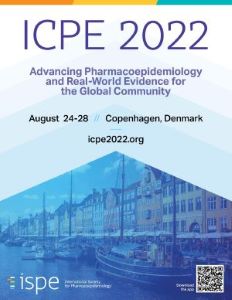Back
Drug Utilization Research
Poster Session: Poster Session A
(103) Differences in The Use of Medications for Treated ADHD Patients Between Children and Adults from Real-World Data in Korea
Friday, August 26, 2022
8:00 AM – 6:00 PM CEST
Location: Hall C
Publication Number: 434
YOON CHO
– Ajou university, Suwon, Gyeonggido, South KoreaHankil Lee, PhD, MS, BPharm
– College of Pharmacy, Ajou University, Suwon, Gyeonggido, Republic of Korea
Presenting Author(s)
Co-Author(s)
Background: The incidence and the interest of Attention-Deficit Hyperactivity Disorder (ADHD) are steadily increasing in Korea. Although several studies have used real-world data (RWD) to show the patterns of drug use in children with ADHD, there is a paucity of studies in adult ADHD patients even with the dramatic increase in the prevalence of adult ADHD. Since September 2016 in Korea, the national insurance criteria have changed that the adult ADHD treatment can be reimbursed.
Objectives: Using the recent RWD after initiating the reimbursement for the adult ADHD patients, we analyzed the difference in clinical characteristics, healthcare security program (HSP), medication patterns, and medical expenditure between adult and child patients with ADHD.
Methods: Using the Korean 2017 national representative data, treated ADHD patients were defined as those who had a history of ADHD diagnoses at least twice a year and were prescribed ADHD medications. Medications were defined as three types of methylphenidates (MPH) including osmotic-controlled release oral delivery system MPH (OROS-MPH), extended-release MPH (ER-MPH), immediate-release MPH (IR-MPH), atomoxetine (ATX), and clonidine (CLO). To determine the patterns of drug prescription types, we identified patients who prescribed single ADHD medication of ER/IR/OROS-MPH, ATX, CLO and prescribed two or more types of drugs among IR/ER/OROS-MPH within a year. And we analyzed gender, types of HSP, medication patterns, medical expenditure in the two groups by classifying them into adults (≥20 years) and children ( <20) by χ2 test with a significance level of p <0.05.
Results: The male to female ratio in the adult group was 2.1 (68.0% vs. 32.0%), but in the child group, it was 4.2 (80.8% vs. 19.2%) (p < 0.01). The proportion of enrolling in the Medical Aid program in the child group (10.8%) was 2.2 times higher than the adult group (5.0%) (p < 0.01). The annual average number of outpatient visits for ADHD treatments was no statistical significance in the two groups. MPH was the most frequently prescribed medication (adults: 84.5%, children: 87.6%) in both groups, followed by ATX and CLO. OROS-MPH was prescribed the most in both groups, but the proportion of OROS-MPH use in adults (61.5%) was higher than children (45.9%). The proportion of prescribing MPH combination (2+) was higher in children (22.0%) than in adults (16.5%). The average annual medical expenditure for outpatient visits and admissions was $429-$465 and $3,283-$5,685 with the differences in the two groups were not statistically significant.
Conclusions: We identified differences in ADHD treatment in gender ratio, types of HSP, medication patterns between adults and children. Additional study is required to confirm the impact of this difference on health outcomes.
Objectives: Using the recent RWD after initiating the reimbursement for the adult ADHD patients, we analyzed the difference in clinical characteristics, healthcare security program (HSP), medication patterns, and medical expenditure between adult and child patients with ADHD.
Methods: Using the Korean 2017 national representative data, treated ADHD patients were defined as those who had a history of ADHD diagnoses at least twice a year and were prescribed ADHD medications. Medications were defined as three types of methylphenidates (MPH) including osmotic-controlled release oral delivery system MPH (OROS-MPH), extended-release MPH (ER-MPH), immediate-release MPH (IR-MPH), atomoxetine (ATX), and clonidine (CLO). To determine the patterns of drug prescription types, we identified patients who prescribed single ADHD medication of ER/IR/OROS-MPH, ATX, CLO and prescribed two or more types of drugs among IR/ER/OROS-MPH within a year. And we analyzed gender, types of HSP, medication patterns, medical expenditure in the two groups by classifying them into adults (≥20 years) and children ( <20) by χ2 test with a significance level of p <0.05.
Results: The male to female ratio in the adult group was 2.1 (68.0% vs. 32.0%), but in the child group, it was 4.2 (80.8% vs. 19.2%) (p < 0.01). The proportion of enrolling in the Medical Aid program in the child group (10.8%) was 2.2 times higher than the adult group (5.0%) (p < 0.01). The annual average number of outpatient visits for ADHD treatments was no statistical significance in the two groups. MPH was the most frequently prescribed medication (adults: 84.5%, children: 87.6%) in both groups, followed by ATX and CLO. OROS-MPH was prescribed the most in both groups, but the proportion of OROS-MPH use in adults (61.5%) was higher than children (45.9%). The proportion of prescribing MPH combination (2+) was higher in children (22.0%) than in adults (16.5%). The average annual medical expenditure for outpatient visits and admissions was $429-$465 and $3,283-$5,685 with the differences in the two groups were not statistically significant.
Conclusions: We identified differences in ADHD treatment in gender ratio, types of HSP, medication patterns between adults and children. Additional study is required to confirm the impact of this difference on health outcomes.

